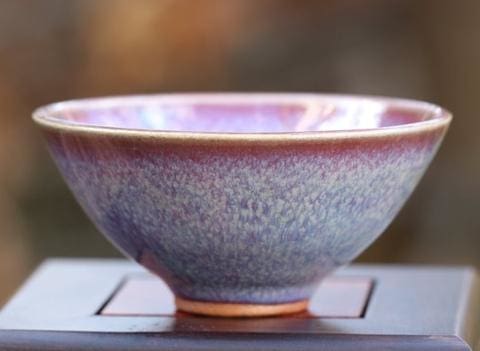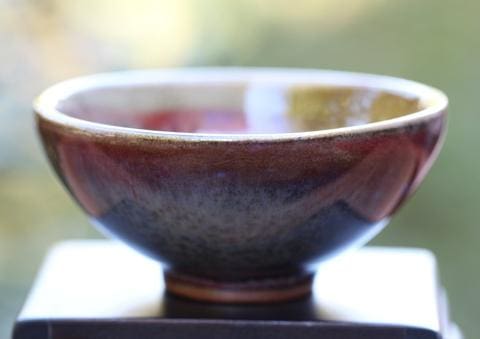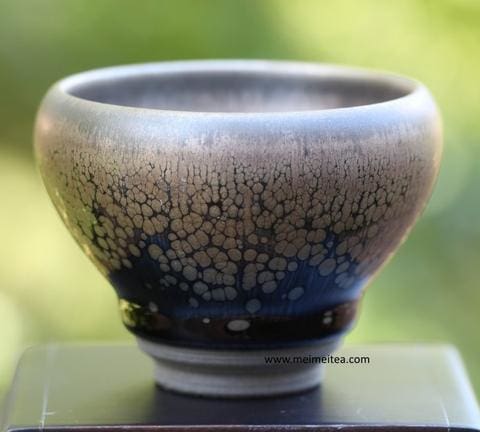Your Guide to the Tea Cup – Part I

Contrary to popular belief, wine connoisseurs have only discovered recently the importance of the wine glass and the role that it plays in enhancing the taste of their favorite Dionysian beverage. Since about the 1990s, glass manufacturers and artisans have been playfully experimenting with form, size, and materials, noticing how it lets the wine “breath,” makes it easier to swirl, and allows for appreciating the beauty of its color and clarity.
By contrast, the relationship between tea and tea cups dates back much further. Porcelain tea cups, complete with handles, were being produced in the 17th century, while tea bowls—another traditional means to enjoy the beverage—were in use long before the 13th century.
With so many shapes, sizes, and textures, what do you need to know about your tea cups?
Weight
Tea cups are available in a variety of materials—such as glass, porcelain, or stoneware—and as a result, you can find some that are thin, delicate, and airy while others seem heavy enough to hold down the most unruly stack of papers in a windstorm. You may want to think carefully about what tea you’ll be drinking before selecting a tea cup though, as the density of the cup serves a functional purpose.
Heavier cups made from dense clay, such as Jun Ci, will retain the heat of the beverage. The benefit is that these cups are easier to hold as the tea is hotter and they help keep your tea at the desired temperature for a longer period of time, but this isn’t always appropriate.
If you plan on drinking the tea at a cooler temperature, then you will want to choose a tea cup with thinner walls, like paper thin porcelain. These kinds of tea cups will disperse the heat, lowering the temperature of your tea more quickly.
In general, heavier tea cups are well-suited for teas that are brewed at higher temperatures while lighter tea cups are better for lower-temperature teas, but this isn’t a steadfast rule. Sometimes, for instance, we want to drink a good oolong at a lower temperature rather or, conversely, enjoy a green tea while it’s nice and hot.

Color
Most of us select tea cups that showcase a color that we find attractive, and there’s nothing wrong with doing so for part of the joy of drinking tea is in reflecting on the experience of it. Colors too, however, can be functional.
Have you ever walked outside on a hot summer day in dark clothing? It can make for an uncomfortable experience, as if someone were following you around with a giant magnifying glass. The reason for this is that dark colors absorb more wavelengths of light and reflect less, which means as long as the source of heat is a light source, darker colored materials will get hotter faster and stay hotter longer.
But this is only important if we plan on drinking tea outside or, perhaps, by some candles or a fireplace. Since most of us drink our tea indoors, how does this change things?
We certainly don’t have to worry about color affecting the temperature of our tea, but it might affect the way our tea tastes.
It has long been said that tea tastes best from a Jian Zhan tea cup. A large part of the reason for this, say tea masters and artisans, is that clay has its own flavor that it imparts to the tea, and in the case of Jian Zhan, the clay complements and enhances the best flavors of the tea. This may very well be true, but there is another interesting element in play.

Psychologists at the University of Melbourne published a study in the journal Flavour. For his experiment, he let participants taste the same coffee from mugs with the same shapes, rating that coffee on 0-100 scales for sweetness, bitterness, and aromatic strength. The variable that was different was the color of the mugs, using blue, white, and clear. What he discovered was that people perceived coffee from the white mug to be more intense and less sweet than coffee from the blue or transparent mugs.
A coffee experiment with color doesn’t mean that we should all throw out our teaware and purchase white tea cups. Rather, as the lead experimenter George van Doorn explains, this may have to do with a mental association between the color brown and the flavor bitterness, and so because the white mug provided the right point of contrast with the coffee, it made it look darker, creating the expectation that it would be more bitter.
Bitter generally isn’t a quality that we want from our tea, and so it is worth experimenting to explore what colors of your tea cups tend to bring out the flavors you enjoy most. The radiance that tea has when sitting in a Jian Zhan cup, for example, might certainly jog a mental association with something special or magical, which could also help explain why it tastes better.
Next week, we’ll talk about the importance of the shape and size of tea cups. Stay tuned!
